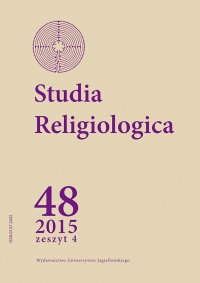The Cognitive Value of Hallucinations
The Cognitive Value of Hallucinations
Author(s): Tomasz SikoraSubject(s): Cultural history, Ancient World, Cognitive Psychology, Psychoanalysis, Substance abuse and addiction
Published by: Wydawnictwo Uniwersytetu Jagiellońskiego
Keywords: shamanism; hallucinations; terror management theory; subliminal perception; symbolization;
Summary/Abstract: With beginnings probably dating back to the end of the Middle Paleolithic period, shamanism seems to be predominantly connected with the use of hallucinogenic agents and the experiences resulting therefrom. For this reason it is worth asking how the shamanistic cultural complex could function over such a long period of time in adaptive terms if the substance of its practice and ideology included the processing of information based on hallucinations. In the light of contemporary nomenclature, the latter are understood as inadequate erroneous perceptions. Accepting such a concept of hallucinations, it is possible to explain the long currency of shamanism on the basis of evolutionary cognitive error management theory, costly signalling theory, or evolutionary psychiatric group-splitting theory. However, the dominant approach to the phenomenon of hallucination may be questioned, and it is conceivable that at least some of its contents constitute a mediated projection of subliminal precepts preceding an experience of hallucinations or co-occurring with them. Transformations of hallucinations preceding their entry to the field of consciousness may be governed by the rules of association described by Herbert Silberer’s theory of self-symbolization and those brought to light by such researchers on subliminal perception as Otto Pötzl, Charles Fisher, or Norman Dixon. From this new perspective, a new definition of hallucination must be developed – a definition that will take the actual cognitive value of this phenomenon into consideration and be more adequate for providing a description of the full cognitive dynamics of the shamanistic complex.
Journal: Studia Religiologica. Zeszyty Naukowe Uniwersytetu Jagiellońskiego
- Issue Year: 48/2015
- Issue No: 4
- Page Range: 291-299
- Page Count: 9
- Language: English

